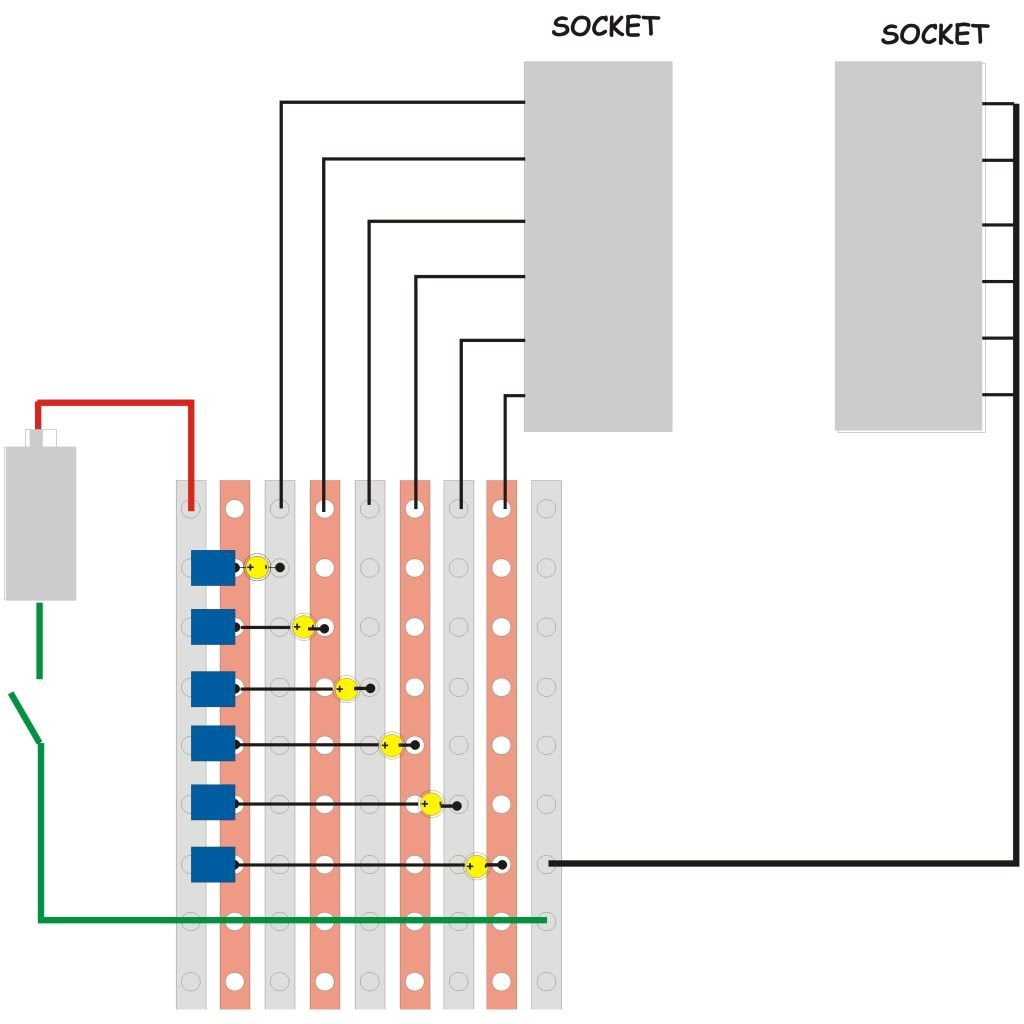It occurred to me that removing the existing sockets seemed like a lot of work and would prevent me from using it with conventional cables unless I installed the LEGO sockets in parallel with the existing ones, possibly glued onto the outside of the cases.
So I wondered, why not build my own?
Not an electrician but it seemed that the sockets, 6 LEDS with resistors and a bit of scrap Veroboard should suffice.
I came up with this rough diagram and would appreciate any advice from the experts on mistakes I have made before starting work.

Sorry about the size!